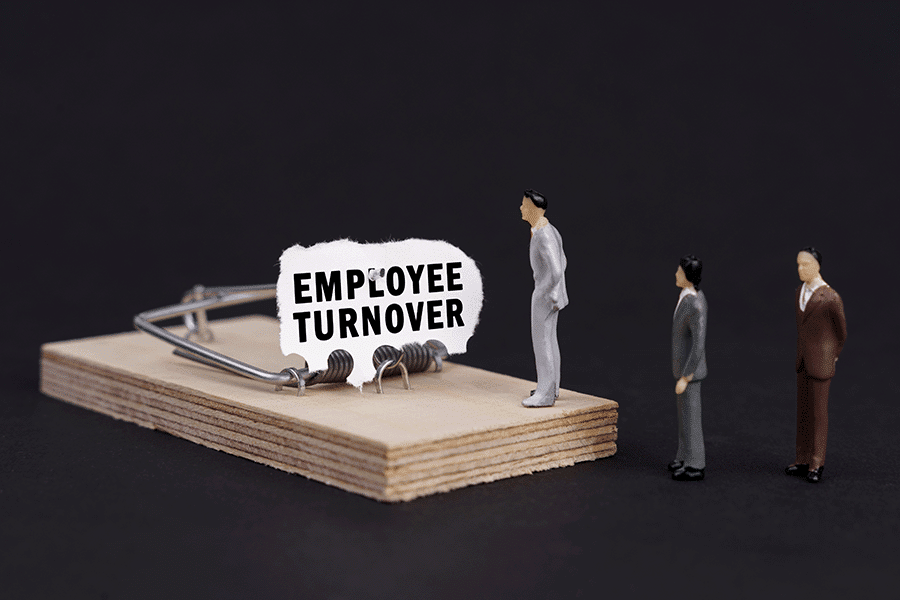She was the office manager who kept a $2.8M home services company moving forward as they focused on growing to $4.5M. She was also an employee for eight years whose leadership was the glue that held things together.
James, the business owner, mentioned how he noticed Michele’s work was below her typical abilities but not terribly. At that moment, I suggested his leadership team, which included Michele, participate in a leadership development Leadership Circle Profile** assessment. Seeing the confusion on his face, I said, “Culture comes from leadership. Do you think something is off with your culture?”
“Our culture is great!”
Now, after years of helping businesses, the one phrase that tells me everything I need to know is, “Our culture is great!” Read on to understand the relationship between culture and leadership development.
It’s Hard to Read the Label From Inside the Bottle.
Like James, it’s especially hard when it’s your business and you’ve put the effort into creating your desired culture. But, in this case, I knew leadership and culture needed to be looked at.
The first step to diagnosing a culture-related challenge is to understand how members of the leadership team operate independently and collectively.
This is where the Leadership Circle Profile (LCP) comes in. The LCP is a tool that helps leaders understand their strengths and areas for improvement and leadership development by gathering feedback from their team and comparing it with their own assessment. It provides a detailed view of both the innovative and potentially limiting aspects of a leader’s style. Think of it as a personalized roadmap to becoming the best leader you can be.
After James and his team completed their assessment, I reviewed the results. Something on Michele’s report caught my eye, which I addressed during Michele and my 90-minute debrief.
A 90-Minute Conversation That Changed Everything
After learning more from Michele, I asked, “Are you planning on leaving the company?” Tears began to swell in her eyes, and she said, “Yes. How did you know that? I haven’t told anybody.” After explaining how I came to the conclusion, it opened the door to having a deeper conversation.
With her permission, I shared that Michele wanted advancement opportunities, not an increase in pay, with James.
For someone who had as much institutional knowledge as she did and had been an employee for eight years, James figured out what he needed to do.
Michele’s inability to advance, even the feeling she could not, was a symptom of a cultural business challenge. And, it was discovered other employees felt the same way. What first seemed like one potential loss was actually indicating a broader mass exodus.
From Near-Disaster to Thriving Success
Michele continues to be the Office Manager and is in her eleventh year of working with James. She’s happy, has expanded her role, and now has an assistant. Also, the business hit $5.2M within one-and-a-half years of almost losing Michele.
Allowing culture to “take care of itself” puts you in a precarious position. Dedicating time to understanding and adjusting your leadership style and focusing on culture will save you the heartache of losing good people and, with them, business growth. Don’t leave culture to chance. Engage with your employees consistently, and you’ll create a foundation of trust, allowing you to understand the underlying currents of what’s going on with your employees.
Key Lessons for Leadership and Building a Thriving Company Culture
- Leadership defines culture: The leadership team’s actions, decisions, and management styles shape the culture for better or worse. To get to the root of cultural issues, start by looking at your leadership development strategies – how your leaders operate and communicate.
- Talk it out: Want a well-functioning culture? Create a safe space for employees to share their concerns and ideas and you build trust. When you have trust you gain valuable insights into what’s really going on beneath the surface. One of the quickest ways to do this is to have five-minute conversations with every person on your team once a week (don’t wait for annual reviews).
- Give room to grow: Your employees are your most valuable asset. They need room to grow and advance within your company. When they feel limited in their roles, they’ll start looking for greener pastures at other places of employment. Loyalty only goes so far. Providing opportunities for growth and leadership development is essential for retaining top talent.
*Names changed to protect the innocent
You can email Paul Boomer at boomer@wizardofads.com when you’re ready for guidance with:
- Assessing your company’s current culture and identifying areas for improvement
- Implementing a leadership assessment to uncover hidden issues and opportunities
- Developing strategies to foster open communication and employee engagement
- Creating a roadmap for employee growth and advancement within your organization
- The Invisible Problem You Only Notice When It’s Late - October 31, 2025
- It’s Not the Tool. It’s How You Think. - October 24, 2025
- If AI’s Letting You Down, This Might Be Why - October 19, 2025

